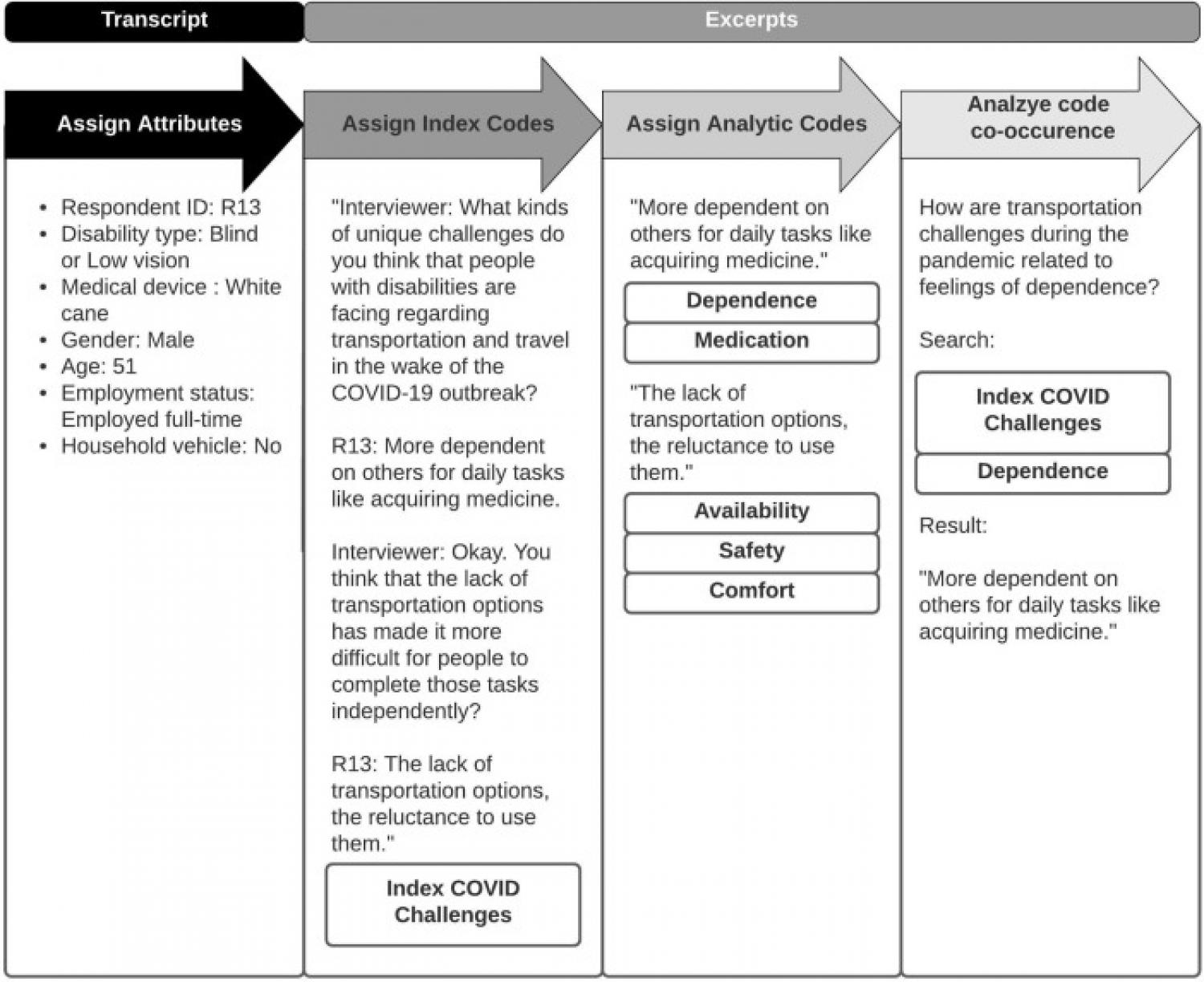
Elsevier, Transportation Research Interdisciplinary Perspectives, Volume 8, November 2020
People with disabilities may be particularly vulnerable to the direct health effects of the COVID-19 pandemic as well as the wider impacts of the pandemic response. People with disabilities experience numerous barriers to using transportation to access essential goods, like fresh food, and services, like medical care, that are necessary for maintaining health. The pandemic and the pandemic response threaten to exacerbate persistent health disparities and add to transportation barriers that disadvantage people with disabilities. To better understand difficulties that individuals with disabilities are facing using transportation and meeting their needs during the pandemic, I conducted in-depth interviews with 21 San Francisco Bay Area residents with disabilities between March 20 and April 6, 2020, immediately following adoption of the first shelter-in-place orders in the region. Analyzing these interviews, I find that the pandemic is aggravating many difficulties accessing transportation and other essentials that people with disabilities regularly encounter. These include challenges accessing reliable and safe transportation as well as up-to-date communications about transportation and public health, and difficulties getting needed assistance using transportation and completing activities of daily living ranging from personal care to getting groceries. I recommend that those involved in the pandemic response make a concerted and intentional effort to address barriers to accessing needed transportation, communications, and assistance that people with disabilities are facing during the pandemic, paving the way for a more inclusive pandemic response.
